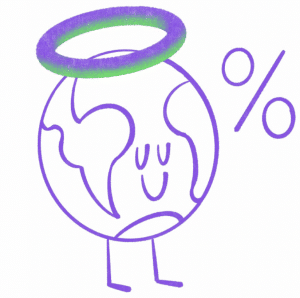In the minds of a large majority, the term “NFT” rhymes with excessive energy consumption. For Artrade (ATR), it is essential to change this view. Find out how the app is working towards carbon neutrality, while also encouraging the redistribution of funds to charity.
Artrade, the social network for non-fungible tokens (NFTs)
Launched in March 2021, at a time when the non-fungible token (NFTs) sector was the leading attraction in the cryptocurrency market, Artrade (ATR) is a web and mobile application for viewing, referencing, curating, buying and creating NFTs.
Inspired by the user experience of the most popular social networks, including Instagram, Twitter or Pinterest, Artrade “was designed to meet the needs of as many people as possible, as simply as possible”. The French startup has the ambition to democratise the NFT market and wants to make its application a reference for novices.
Of course, Artrade has the classic features of a social network, namely the news feed, the search tab, the possibility to follow artists that interest us or to share and communicate with other users. However, the real added value of the application lies elsewhere:
- NFT Live: the most anticipated option, it allows you to create an NFT “live”, directly from a phone or mobile device. It is also instantly customisable with a series of filters, emojis, text or even GIFs;
- NFT Real: This feature allows anyone to post an NFT for sale that is associated with a real, physical asset. In other words, if you want to sell any item, Artrade allows you to tokenise it and list it on its platform as an NFT;
- Virtual Gallery: one of Artrade’s options is a section of its application entirely dedicated to viewing NFTs in the manner of Tumblr or Pinterest. In fact, this space is specific to each user and takes the form of a virtual gallery.
A desire to put ecology at the heart of the NFT market
During 2021, non-fungible tokens have been turning heads. One such example was the record-breaking sale of Beeple’s NFT for a whopping $69 million.
Today, although the word “NFT” is on everyone’s lips, their functioning and usefulness are still obscure to the general public. For the most part, they remain nothing more than pixel clusters that are bought at exorbitant prices by wealthy investors who don’t know what to do with their money.
That said, there is one thing that most people, expert or not, agree on: NFTs are horrendously power hungry. However, while this criticism is valid in the current state of congestion of the Ethereum network (ETH), it is not valid for all blockchains.

Driven by a team concerned with ecological and environmental issues, Artrade wanted to design the “least energy-consuming” computer product possible. In this sense, the choice fell on the Solana blockchain (SOL). Based on a hybrid Proof-of-Stake and Proof-of-History consensus, it is much more efficient than Ethereum in terms of costs, speed and energy consumption.
Indeed, this blockchain theoretically promises an average of 65,000 transactions per second, i.e. 4000 times more than its competitor. Moreover, the cost per transaction is a few fractions of a dollar and the speed of execution of transactions is around 0.4 seconds. Thus, all transactions – mint, sell, buy or transfer NFTs – on Artrade will have a very low energy cost.
Although the energy consumption is very low, Artrade does not want to stop there. The ultimate goal is to achieve total neutrality. To achieve this, the remaining consumption will be compensated for by funding non-profit organisations working for climate and environmental protection. ClimatePartner will certify that the balance is neutral.
Artrade’s values: success through responsibility
In building its economic plan, Artrade was greatly inspired by the concept of Sanpo Yoshi, according to which a business should benefit everyone, not just the seller and the buyer.
Between the 17th and 19th centuries in Japan, Omi Shonin was the most successful merchant community. The key to their success was the basis of their strategy, “Three-Way Satisfaction”: good for the seller, good for the buyer and above all good for society.

Artrade’s values: putting the buyer, the seller and society at the centre of the economy
It is with this in mind that the Artrade platform was built: to leave zero impact on society and the environment surrounding the buyer and seller. Of course, this includes the ambition of total carbon neutrality mentioned below, but not only. Indeed, Artrade also wishes to allow its users to participate, when they wish, in the financing of charities.
To put it simply, NFTs creators, renowned collectors and future stars of the platform will be able to choose to donate all or part of their profits to charities.
Through the Binance Charity Wallet tool, Artrade has created a fund that will collect donations from the platform’s various users. Then, thanks to the Binance Charity Foundation, the money collected will be used to finance numerous charitable projects in a totally transparent manner.
To illustrate this point, let’s imagine that an internationally renowned footballer makes an NFT Real of his autographed shirt through the Artrade application. He will be able to choose to distribute a percentage of this amount to the charity fund and thus benefit organisations such as UNICEF or the World Wildlife Foundation (WWF).
